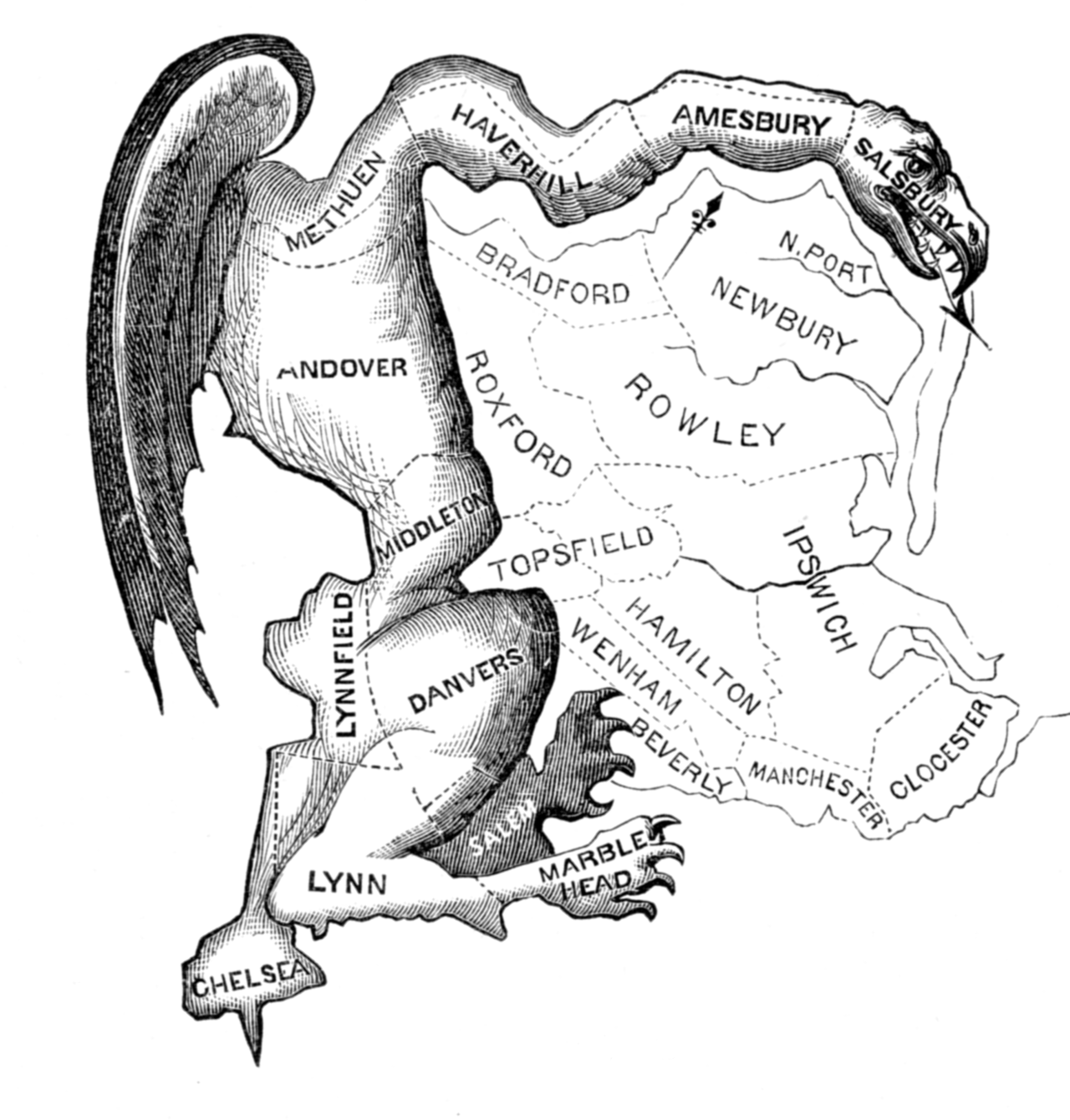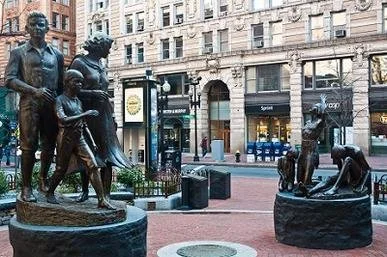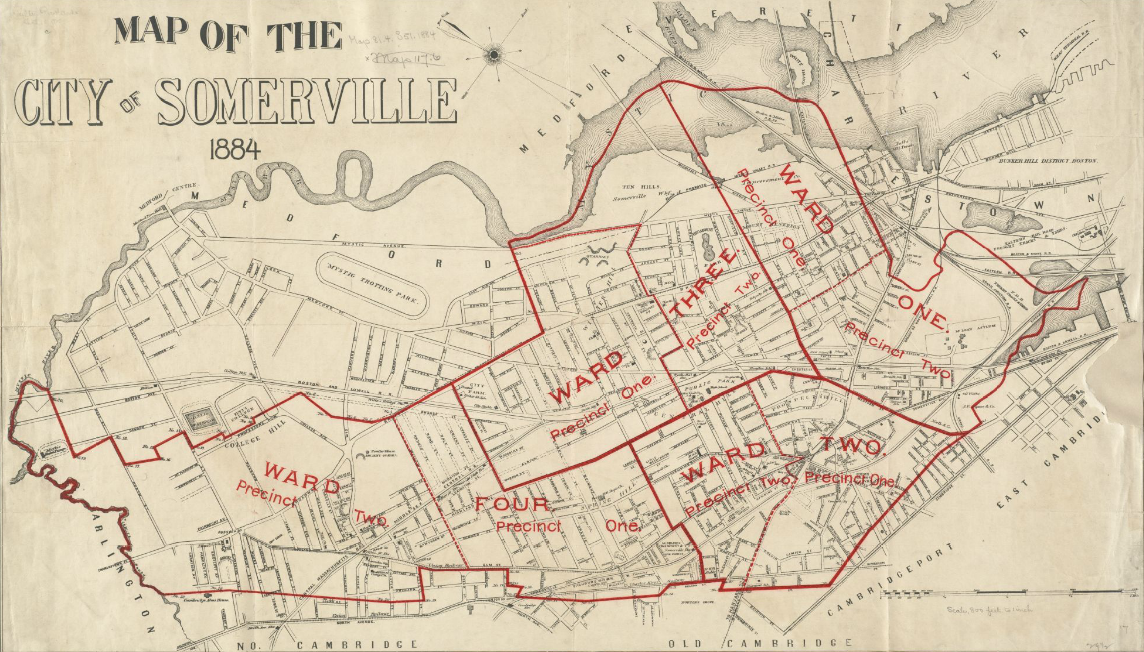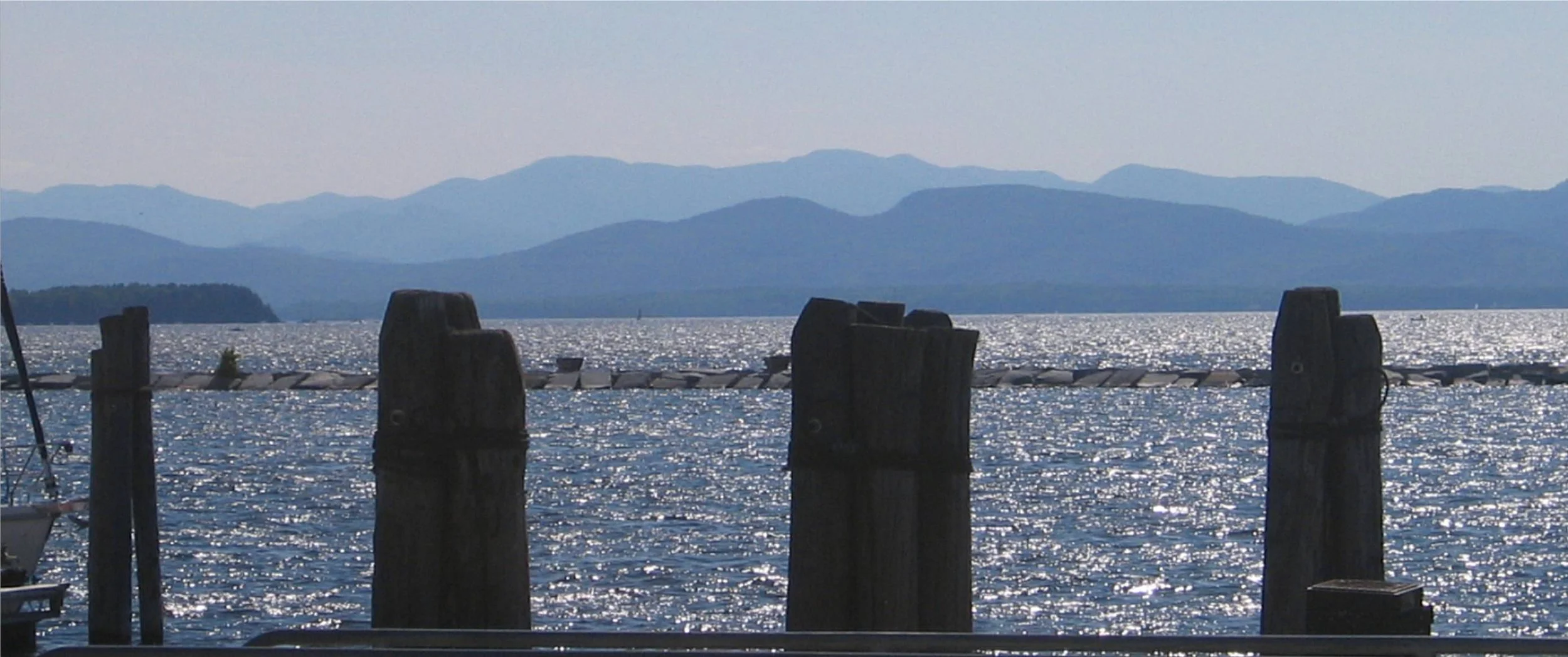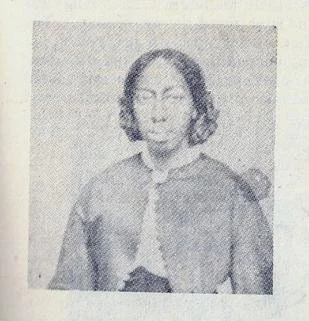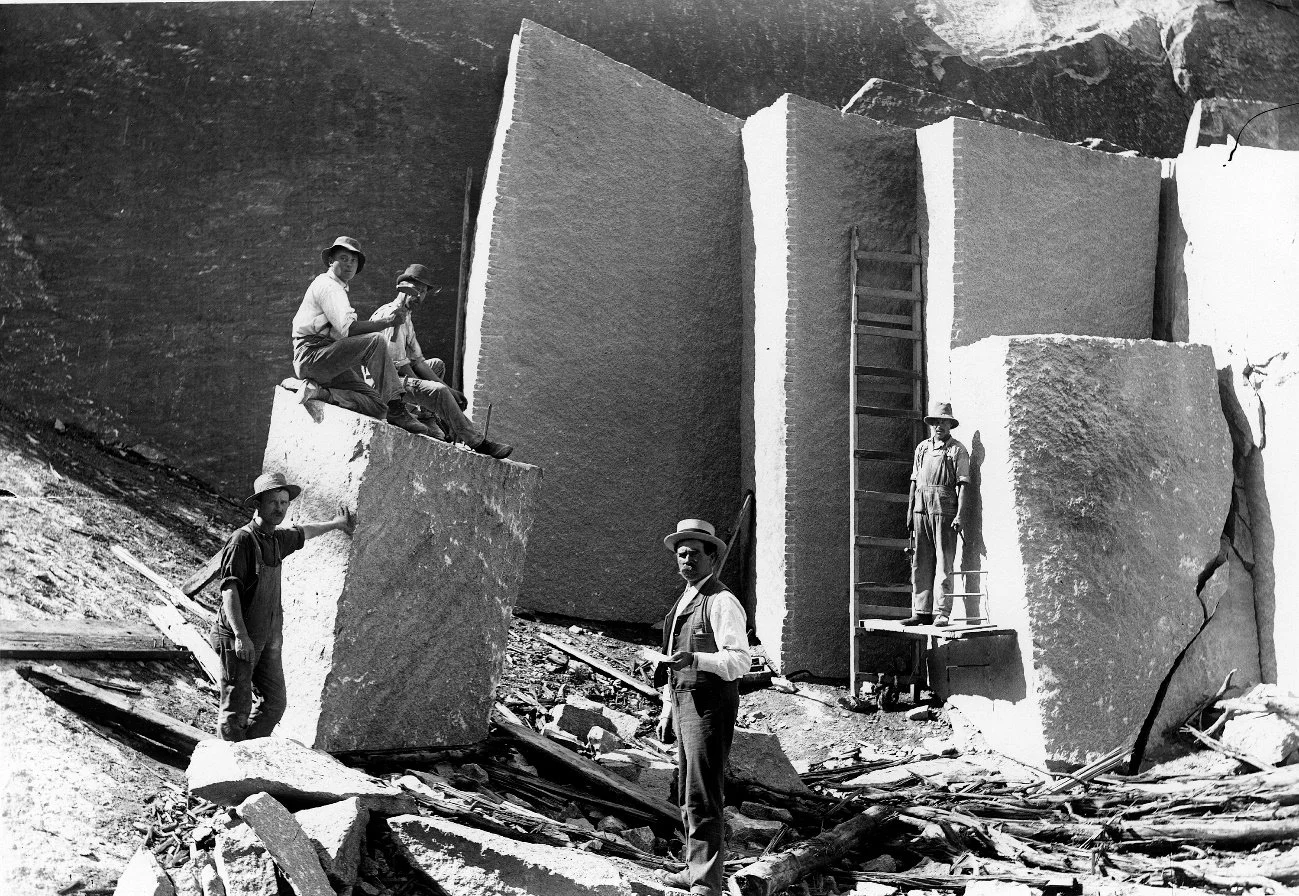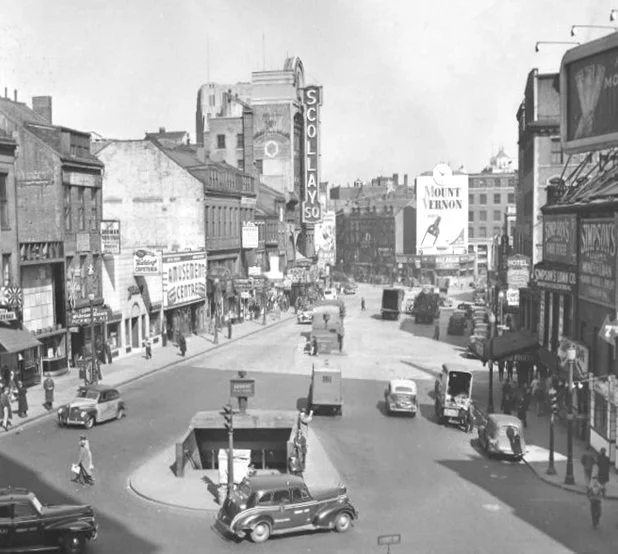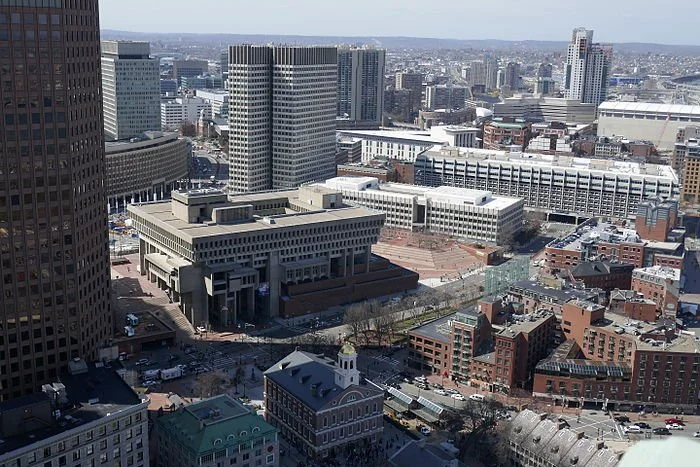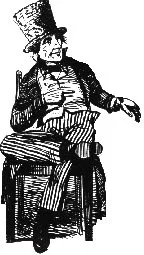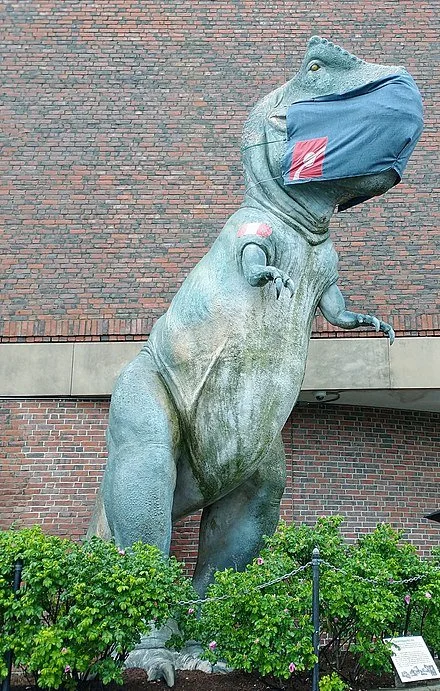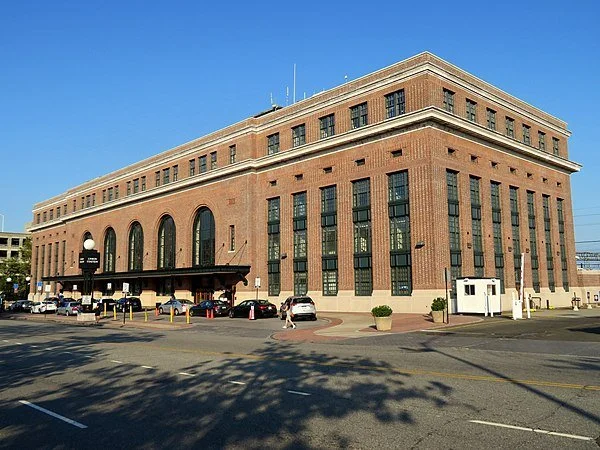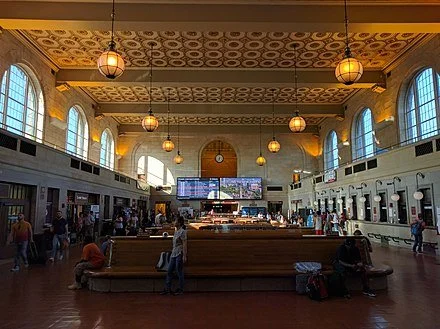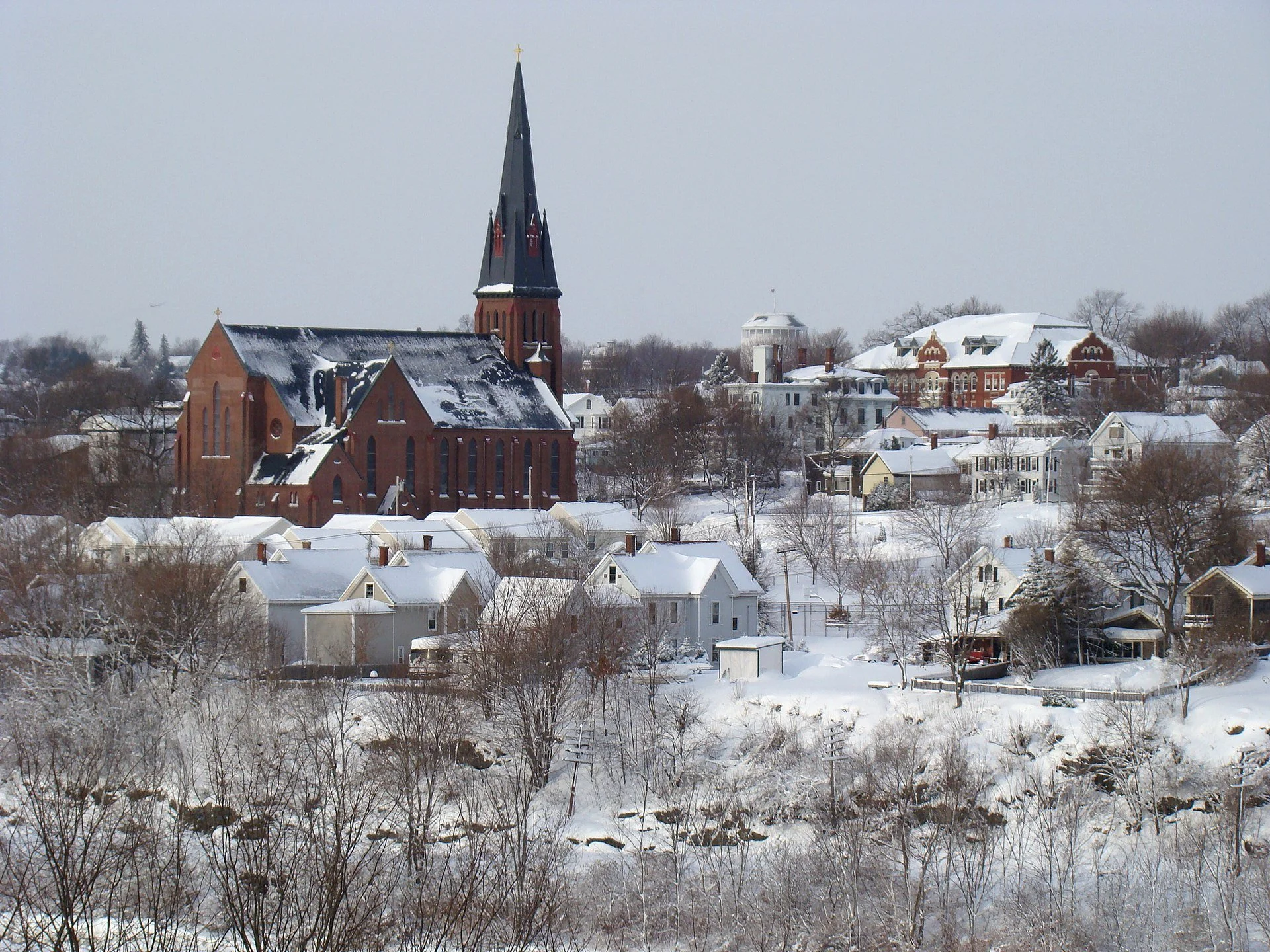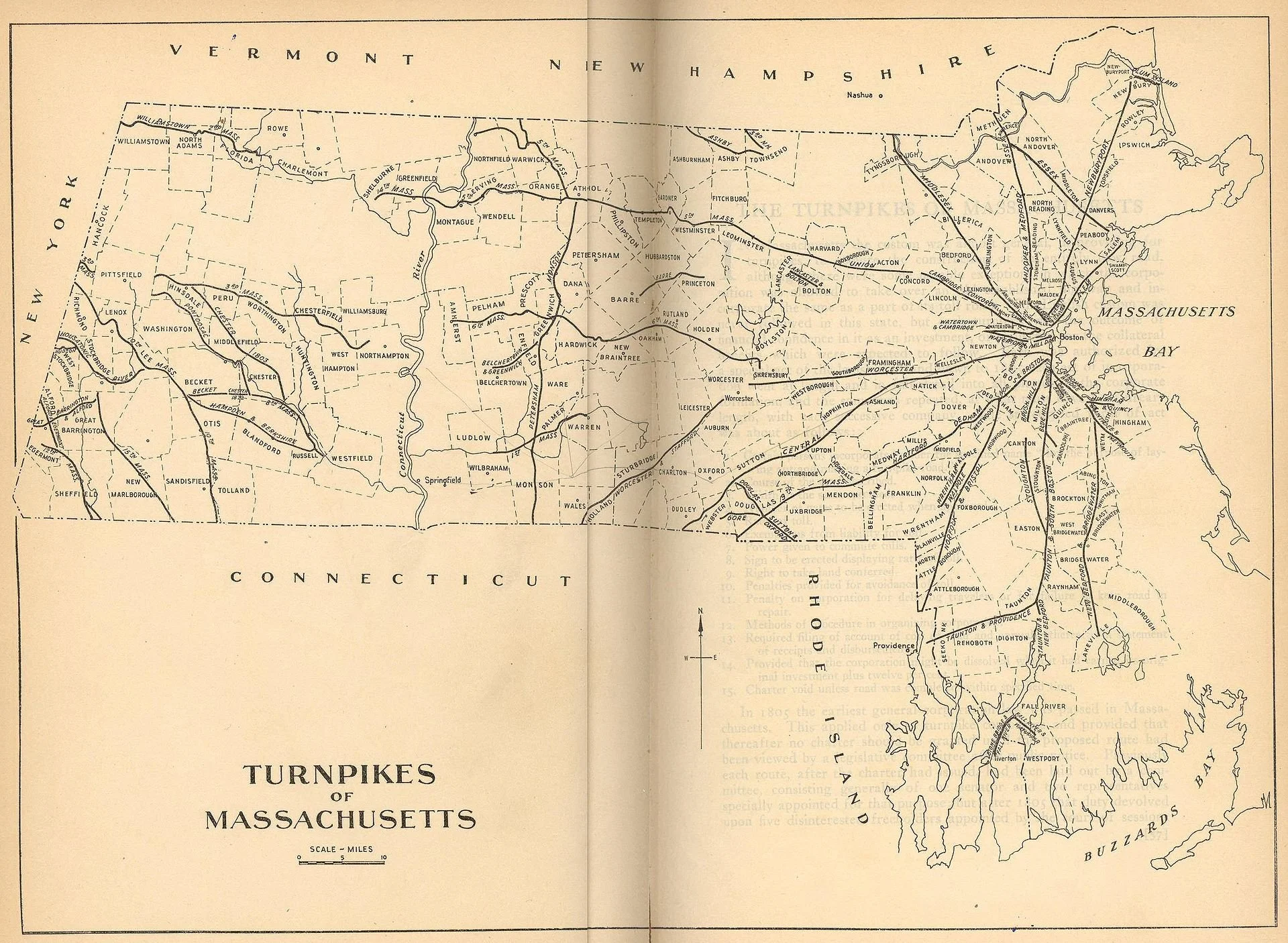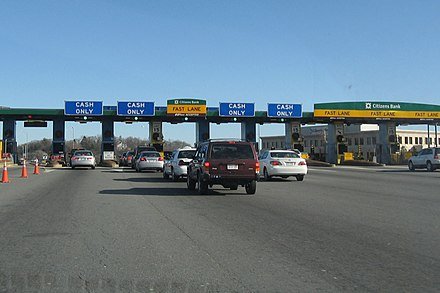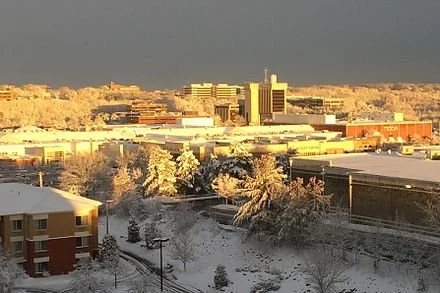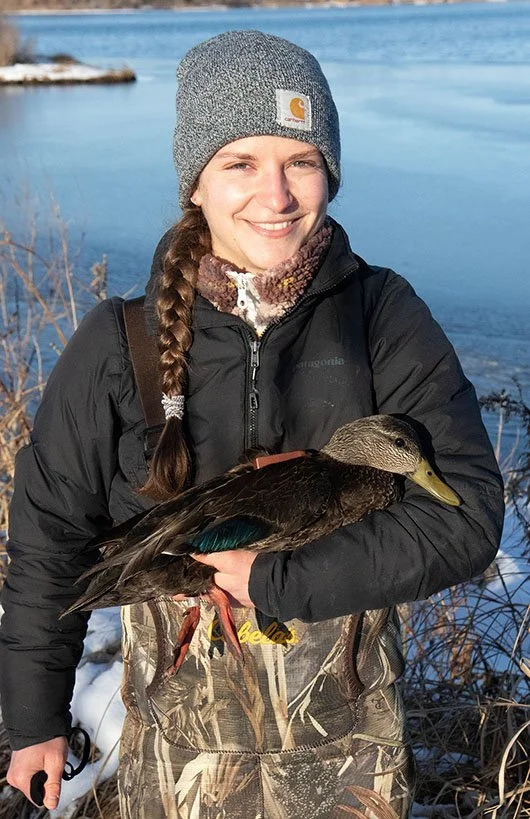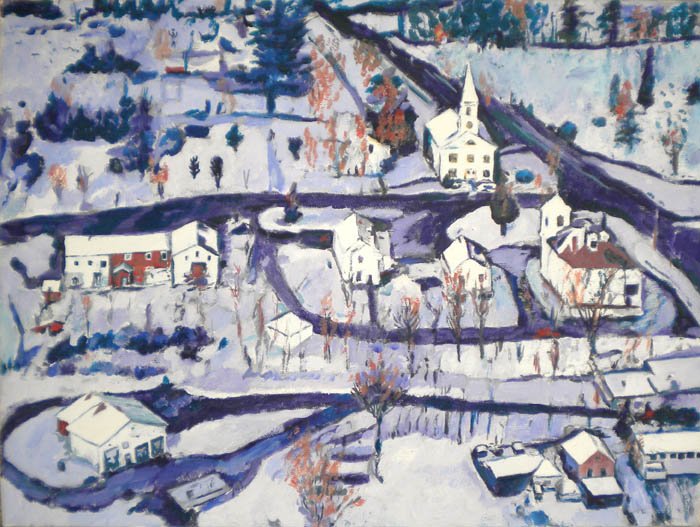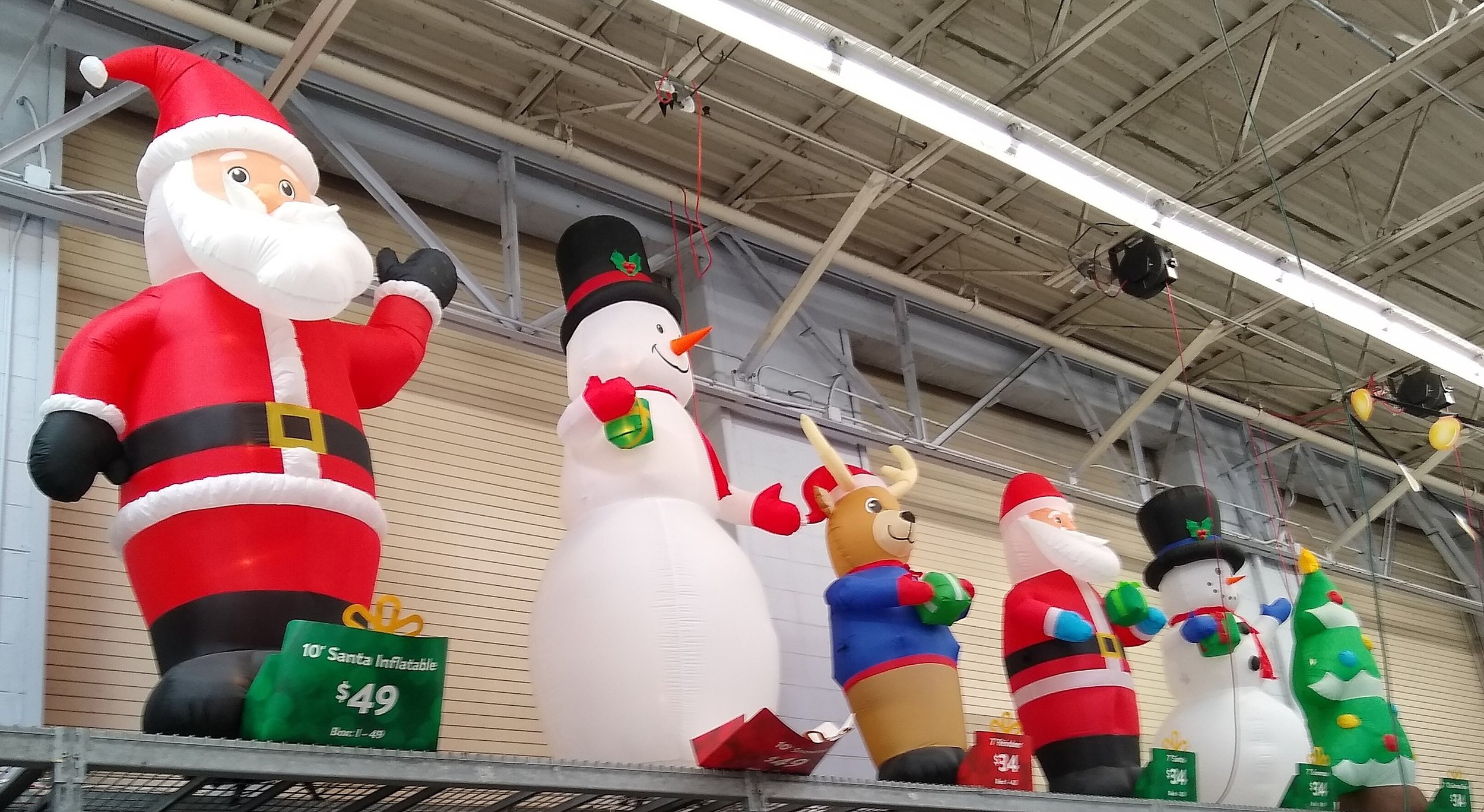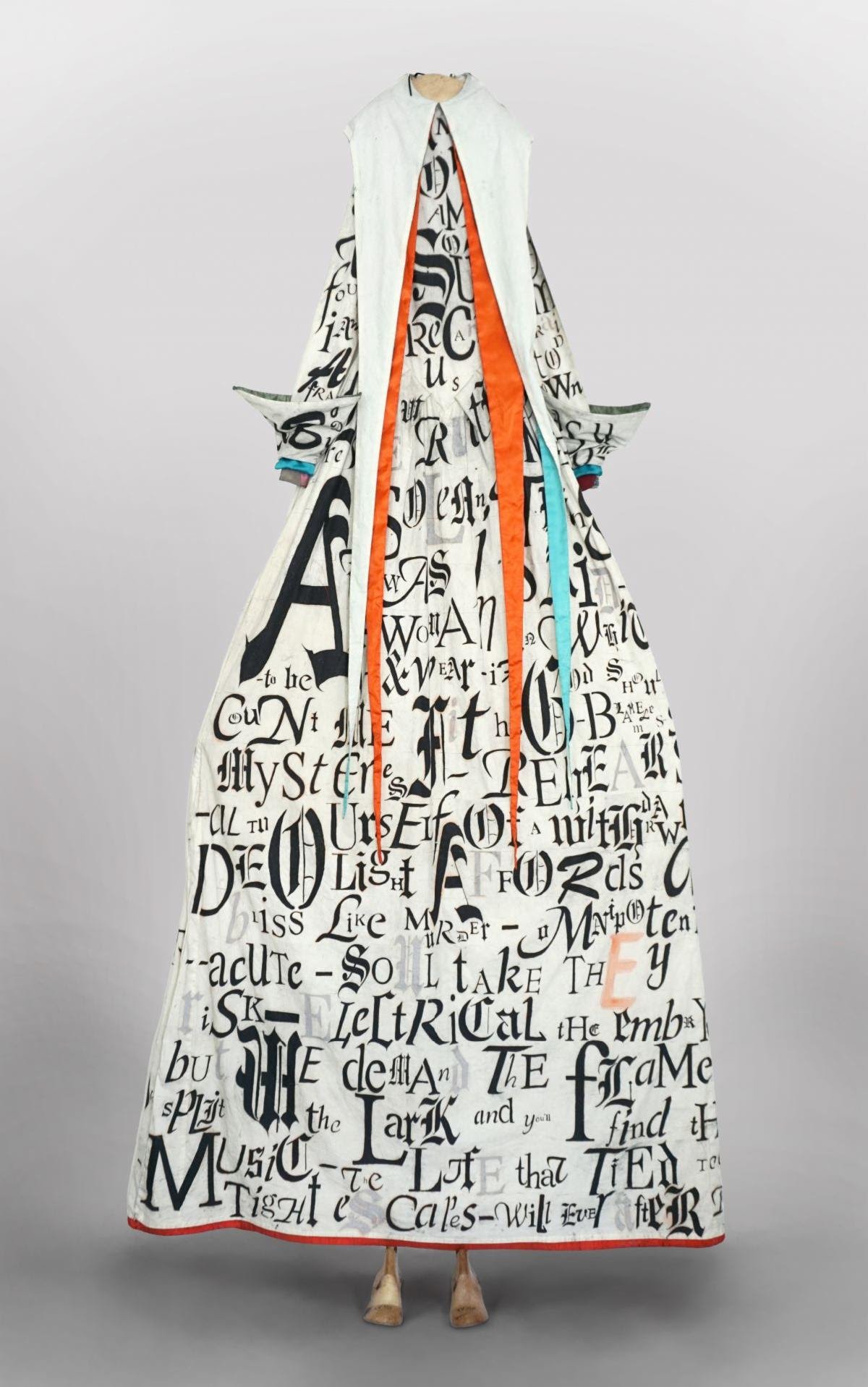
Our feathered friends await orders for 2022
Getting our Canada geese in a row for 2022 on the South Branch of the Pawtuxet River at Riverpoint, in West Warwick, R.I.
— Photo by Linda Gasparello of White House Chronicle
The Canada Geese on this branch of the river are like the swallows of San Juan Capistrano. They return in the winter. Their summer gorging ground is the north branch.
Ruthless political amphibian
Printed in March 1812, this political cartoon was made in reaction to the newly drawn state senate election district of South Essex created by the Massachusetts legislature to favor the Democratic-Republican Party. The caricature satirizes the bizarre shape of the district as a dragon-like "monster," and Federalist newspaper editors and others at the time likened it to a salamander.
The term gerrymander is named after Elbridge Gerry, the Massachusetts governor (and later U.S. vice president) who in 1811 signed a bill creating the district above. Gerrymandering is almost always considered a corruption of the democratic process.
— Jeffrey Toobin (born 1960), American lawyer and journalist, including as a CNN legal analyst.
Flowing into COVID’s third year
“Golden Rapids (Maine)” (limited-edition photo-print on anodized aluminum), by Kathleen McCarthy, at Alpers Fine Art, Andover, Mass.
Llewellyn King: Climate crisis, population growth and a solution; N.E.'s densest community
WEST WARWICK, R.I.
It wasn’t front and center at the recent climate-change summit, COP26, in Glasgow, but it was whispered about informally, in the corridors and over meals.
For politicians, it is flammable, for some religions, it is heresy. Yet it begs a hearing: the growth of global population.
While the world struggles to decarbonize, saving it from catastrophic sea-level rise and the other disasters associated with climate change, there is no recognition officially anywhere that population plays a critical part.
People do things that cause climate change from burning coal to raising beef cattle. A lot of people equal a lot of pollution equals a big climate impact, obvious and incontrovertible.
In 1950, the global population was at just over 2.5 billion. This year, it is calculated at 7.9 billion. Roughly by mid-century, it is expected to increase by another 2 billion.
There is a ticking bomb, and it is us.
There was one big, failed attempt to restrict population growth: China’s one-child policy. Besides being draconian, it didn’t work well and has been abandoned.
China is awash with young men seeking nonexistent brides. While the program was in force from 1980 to 2015, girls were aborted and boys were saved. The result: a massive gender imbalance. One doubts that any country will ever, however authoritarian its rule, try that again.
There is a long history to population alarm, going back to the 18th century and Thomas Malthus, an English demographer and economist who gave birth to what is known as Malthusian theory. This states that food production won’t be able to keep up with the growth in human population, resulting in famine and war; and the only way forward is to restrict population growth.
Malthus’s theory was very wrong in the 18th Century. But it had unfortunate effects, which included a tolerance of famine in populations of European empire countries, such as India. It also played a role in the Irish Great Famine of 1845-53, when some in England thought that this famine, caused by a potato blight, was the fulfillment of Malthusian theory, and inhibited efforts to help the starving Irish. Shame on England.
The Boston Irish Famine Memorial is on a plaza between Washington Street and School Street. The park contains two groups of statues to contrast an Irish family suffering during the Great Famine of 1845–1852 with a prosperous family that had emigrated to America. Southern New England was a focal point for Irish immigrants to America, and Irish-Americans still comprise the largest ethnic group in much of the region.
The idea of population outgrowing resources was reawakened in 1972 with a controversial report titled “Limits to Growth” from the Club of Rome, a global think tank.
This report led into battles over the supply of oil when the energy crisis broke the next year. The anti-growth, population-limiting side found itself in a bitter fight with the technologists who believed that technology would save the day. It did. More energy came to market, new oil resources were discovered worldwide, including in the previously mostly unexplored Southern Hemisphere.
Since that limits-to-growth debate, the world population has increased inexorably. Now, if growth is the problem, the problem needs to be examined more urgently. I think that 2022 is the year that examination will begin.
Clearly, no country will wish to go down the failed Chinese one-child policy, and anyway, only authoritarian governments could contemplate it. Free people in democratic countries don’t handle dictates well: Take, for example, the difficulty of enforcing mask-wearing in the time of the Covid pandemic in the United States, Germany, Britain, France and elsewhere.
If we are going to talk of a leveling off world population we have to look elsewhere, away from dictates to other subtler pressures.
There is a solution, and the challenge to the world is whether we can get there fast enough.
That solution is prosperity. When people move into the middle class, they tend to have fewer children. So much so that the non-new-immigrant populations are in decline in the United States, Japan and in much of Europe -- including in nominally Roman Catholic France and Italy. The data are skewed by immigration in all those countries -- except Japan, where it is particularly stark. It shows that population stability can happen without dictatorial social engineering.
In the United States, the not-so-secret weapon may be no more than the excessive cost of college.
Llewellyn King is executive producer and host of White House Chronicle, on PBS. His email is llewellynking1@gmail.com and he’s based in Rhode Island and Washington, D.C.
Web site: whchronicle.com
Occupying slightly over 4 square miles, with a population of 81,360 (as of the 2019 Census) (including a myriad of immigrants from all over the world), Somerville is the most densely populated community in New England and one of the most ethnically diverse cities in the nation.
Happiness front-loaded
Lake Champlain from the Burlington wharves, with New York's Adirondack Mountains in the background
“Where I live, in Vermont, there’s this thing that women know about men, which is this disease: their childhood was so idyllic that nothing in the rest of their life can ever be satisfying. It’s almost a plague.”
– Colin Trevorrow (born 1976) film director who lived in Burlington, Vt., for nine years before moving to London.
“I’m going to a commune in Vermont and will deal with no unit of time shorter than a season.”
– Tracy Kidder (born 1945), author of literary nonfiction books. He was just kidding. He has long lived in the western Massachusetts town of Williamsburg.
Cut the superiority talk
Eliza Ann Gardner
“...{I}f you commence to talk about the superiority of men, if you persist in telling us that after the fall of man we were put under your feet and that we are intended to be subject to your will, we cannot help you in New England one bit.’’
— Eliza Ann Gardner (1831-1922) a Boston African-American abolitionist, religious leader and women's movement leader in 1884. She founded the missionary society of the African Methodist Episcopal Zion Church (AMEZ), was a strong advocate for women's equality within the church, and was a founder of the National Association of Colored Women's Clubs.
Stoned on Cape Ann
“Cheves Quarry, Lanesville, MA.’’ Barbara Erkkila Collection of the Cape Ann Museum Library & Archives, Gloucester, MA. Gift of Barbara Erkkila, 1994.
The Lanesville section of Gloucester had a thriving granite quarry business in the 19th Century. But it was dangerous work.
Seedy Scollay was demolished to make way for the sterile
Boston’s vibrant, if seedy, Scollay Square in the ‘30s, before it was demolished in the ‘60s to make way for the sterile Government Center (below), with its brutalist Boston City Hall. Scollay Square’s psychic heart was a burlesque house/quasi strip joint called The Old Howard.
Chilly New Englanders
Brother Jonathan, a 19th Century personification of New England, in striped pants, somber overcoat and Lincolnesque stove-pipe hat, as drawn by Thomas Nast. He is presented as wary and tight-fisted.
Adapted from Robert Whitcomb’s “Digital Diary,’’ in GoLocal24.com
“I never said, 'I want to be alone.' I only said 'I want to be let alone!' There is all the difference.’’
-- Greta Garbo (1905-1990), movie star, on her most famous quote, from Grand Hotel (1932)
An article in Commonwealth Magazine reports that new Boston Mayor Michelle Wu is disappointed that virtually no one on her MBTA Orange Line rides talks to her, even just to say hello.
She says:
“But we’ve got to change the culture of riding the T. It is a civic space for community conversations, but everyone’s always really quiet on there. Maybe I’m still a Midwesterner at heart.’’ The mayor was brought up near Chicago
To read the Commonwealth piece, please hit this link.
New Englanders tend to be reserved and guarded with strangers, unlike, say, in the South and West, where people tend to be very friendly to all, if often just superficially, like someone trying to sell you a car.
The unofficial New England flag, with its lonely pine.
It sort of reminds me of how in disasters, such as in tornado-ravaged Kentucky and other poverty-stricken “conservative’’ states, much is made of the good works of friendly churches and others in the private sector as opposed to aid from government (though Kentucky, a very poor state, is grabbing all the federal help it can now).
I’d rather have the much more impressive services provided by government in “socialist’’ New England than depend, say, on local churches (which are themselves subsidized by taxpayers because they’re tax-exempt – even the many ones that operate like political-party adjuncts).
Hit this link about Kentucky Sen. Rand Paul, a Republican, who voted for the huge Trump tax cuts while saying he’s terrified of the national debt but now wants as much federal aid as possible for his state. (Who wouldn’t?):
Paul has often opposed big federal disaster-relief programs that help states that don’t include Kentucky, including bills passed following hurricanes Sandy, Harvey and Maria.
Chris Powell: Mask police do their thing as killers stay free; Spiffed up Union Station?
A Tyrannosaurus Rex sculpture outside Boston’s Museum of Science wearing a face mask and a Band-Aid indicating a COVID-19 vaccine has been administered.
MANCHESTER, Conn.
Poor New Haven. Its police department has been unable to make arrests in 35 of the 45 murders committed in the city in the last two years, a failure rate of 78 percent,.
Despite $111 million in federal emergency assistance, New Haven's school system is running a deficit again, constantly losing teachers to higher-paying school systems and unable to provide drinking water to students, having shut down the water fountains in school hallways in fear that the fountains contribute to the virus epidemic. While water bottle-filling stations have been ordered, they may not be installed before the next school year begins.
But elsewhere Mayor Justin Elicker's administration is on a tear of efficiency. Last week the city launched a sweep of local businesses to check compliance with the mayor's order that everyone indoors in commercial facilities must wear a face mask.
Face masks are doubtful mechanisms of curtailing the virus, but if everyone is required to wear a mask indoors, at least medical theater can make city government seem to be taking charge, distracting from its other failures. A problem will arise only if people start comparing risks.
For even before the arrival of the latest variant of the virus, Omicron, 99.8 percent of people infected recovered, and while Omicron is believed to be more communicable, in most cases it also appears to be far less severe, no worse than a cold and less deadly than, say, a bullet to the brain and the other causes of the criminal deaths New Haven can't solve.
But all Connecticut, not just New Haven, should be questioning government's priorities in the face of the city's many unsolved murders.
A few days ago Windsor's police department announced that after eight months of investigation, it remains unable to determine who, back in April, hung ropes resembling nooses at the Amazon warehouse under construction in that town. The ropes injured no one, but many people were eager to claim that they had felt threatened.
A Windsor police statement described the extensive efforts taken to solve the supposed crime: "Numerous interviews of Amazon construction site personnel were conducted, including steel workers, electricians, safety and security workers, and administrative personnel, as well as others not directly involved in the construction site. Investigators reviewed personnel records of multiple employees, camera footage, and shift logs." Some people were given polygraph tests.
Assisting the Windsor police were the FBI, state police, and Hartford state's attorney's office.
What if such federal and regional resources had been poured instead into investigating the 35 unsolved murders in New Haven? Might one or two of them have been solved by now?
Maybe not, but at least Connecticut would have been spared eight months of expensive political correctness.
Union Station in New Haven.
The still gorgeous interior of Union Station, a major stop and train-changing center for Amtrak and Metro North.
Last week there was also a hopeful development in New Haven. After years of failure to act on the huge potential of historic Union Station, the busiest and grandest railroad station in Connecticut, city government and the state Transportation Department signed a development agreement.
State government will lease the station and its adjacent property to the city for 35 years, with a possible extension of 20 years, so the city might improve it with much-needed parking, a bus depot, restaurants and retail shops, offices, a beautiful plaza, frequent shuttle bus service to Tweed New Haven Airport, and whatever else might befit this gateway to Connecticut and link it to downtown New Haven a half mile away -- if enough free money ever can be found from the state and federal governments, since the city never will have any of its own to spare.
It's a compelling idea but as the city's police and school disasters suggest, there's little reason to believe that New Haven is capable of executing it any more than Hartford has been capable of managing its own big development projects, which is why state government has put a state agency in charge of them. The same should have been done for the Union Station project in New Haven.
So it will be no surprise if the project takes 35 years just to get started, only to end up with marijuana dispensaries, methadone and abortion clinics, gambling parlors, still more housing for people who can't support themselves -- and still not enough parking.-
Chris Powell is a columnist for the Journal Inquirer, in Manchester.
‘Not for need of meat’
After a New Hampshire deer hunt, circa 1910.
The German- or Dutch-looking Sprague (Conn.) Public Library
“He aren’t one-a-them homasoxuals, th’po’try’s
just a hobby,” Dad rushed to assure th’Maine folk
leaving him out of his heart
in the cold of his fidgety disgrace.
Presume dad was mortified because he wasn’t
discussing my crushing shoulder bones
on a football field, bouncing balls in a track
suit or digging spikes into somebody’s ankle,
all the pursuits for your son if it wasn’t
hunting season when a’course any real boy’d
wanta be out wind blown rosy checked blowin’
birds apart or bringin’ down a deer just
because it was November when you bring deer down,
certainly not for need of meat.’’
— From “Crossing America,’’ by Leo Connellan (1928-2001), who was born in Portland, Maine, and raised in Rockland in that state. (This inspired his poems about fishermen and other coastal topics.)
Considered one of the “Beat” poets, he spent the last part of his life as a resident of the small town of Sprague, Conn. He was the Nutmeg State’s poet laureate from 1996 to his death. He made his living as a salesman. “Crossing America’’ was inspired by his trips across the country, east to west and north to south.
A state of rigor
Winter in Bangor, Maine
— Photo by Slashinme - Denis Santerre
“My grandfather once told her if you couldn’t read with cold feet, there wouldn’t be a literate soul in the state of Maine.’’
Marilynne Robinson (born 1943), American novelist and essayist, in the novel Gilead
xxx
“In Maine we have a saying that there’s no point in speaking unless you can improve on silence. “
– Edmund Muskie (1914-1996), Maine governor and U.S. senator who served as secretary of state under President Carter
Reveling in the noise
Pre-Mass Pike map of the turnpikes of eastern Massachusetts, with the Worcester Turnpike following the roughly same path as the modern Route 9. Frank Kline would have used this map.
On the Massachusetts Turnpike
"Half the world wants to be like Thoreau worrying about the noise of traffic on the way up to Boston; the other half use up their lives being part of that noise. I like the second half."
-- Franz Kline (1910-1962), American painter who attended Boston University and summered and painted in Provincetown
xxx
"All of my lower-middle-class Boston issues rose to the surface. I don’t like it when bratty, privileged old white guys speak to me like I am their mouthy niece."
— Amy Poehler (born 1971), a native of the Boston suburb of Newton who grew up in the middle-class suburb of Burlington and who’s a TV actress, writer and producer
Burlington’s business district. The large town hosts many high-tech companies.
Aquaculture and waterfowl
URI graduate student Tori Mezebish holds a black duck she tagged as part of her research on the interactions between waterfowl and aquaculture facilities. (Courtesy photo)
From ecoRI News (ecori.org)
As aquaculture operations expand in Narragansett Bay and Rhode Island’s salt ponds, questions have arisen about how ducks and geese are impacted by the facilities. To begin to answer these questions, a University of Rhode Island doctoral student is tracking the movements of local waterfowl.
“There haven’t been any Rhode Island studies yet, but studies on the Pacific Coast have found issues with diving ducks getting tangled up in netting used by aquaculture, and birds that have been deterred from areas that might otherwise be good habitat because of the activities of aquaculture operations,” said Tori Mezebish, a native of Maryland who is collaborating on the project with URI professors Peter Paton and Scott McWilliams and officials from the Rhode Island Department of Environmental Management.
She noted previous studies have also observed sea ducks such as eiders and scoters, which feed on mollusks, preying on oysters and other shellfish being grown by aquaculturists.
“There’s also been some positive associations, like ducks and geese eating some of the aquatic vegetation that accumulates on the cages,” Mezebish said. “It’s a mixed bag of how the birds might interact with aquaculture.”
Last winter, Mezebish attached transmitters to 30 black ducks and 30 brant, a species of goose that lives in salt water. This winter she will deploy an additional 30 transmitters on common goldeneyes, a diving duck. All three species are common during winter in Narragansett Bay, the state’s salt ponds, and adjacent salt marshes.
Most of the brant have returned from their breeding grounds in the Arctic, and several of them spend every day with dozens of other brant on the lawn at Colt State Park in Bristol. Others are spending most of their time in the upper bay and Providence River. The black ducks are just beginning to return to the area from Maine and southern Canada, and the early arrivals have been tracked to the salt ponds and the Galilee area.
Mezebish is tracking the movements of each bird using a GPS unit on their transmitters to see how much time they spend near aquaculture facilities. She is also observing the birds in the field to validate the GPS data and see what the birds are doing around the shellfish farms.
“The goal is to understand what is important to these species outside of the aquaculture facilities,” she said. “Maybe brant need shallow areas with submerged vegetation, so that may not be the best place to put an aquaculture lease.”
In addition to Mezebish’s study, URI postdoctoral researcher Martina Müller is conducting land-based surveys throughout the year to see what other kinds of birds may be interacting with aquaculture facilities.
“Ultimately, we want to provide recommendations about the good and not so good places for aquaculture leases to be placed,” said Mezebish, who became interested in waterfowl research as an intern at the Pawtuxet Wildlife Research Center in Maryland, where she hand-reared ducklings used in the center’s research activities.
When the project is complete, Mezebish hopes to use the study as a springboard to study related questions about other conflicts and interactions between waterfowl and humans.
‘Moment of vulnerability’
“The words that made me” (acrylic on wood panel), by Frantz Lexy, in his show “Exuding Power in Moments of Vulnerability,’’ at Fountain Street Fine Art, Boston.
Mr. Lexy, a Boston-based artist who was born in Haiti, says:
“That painting exudes so much power, and when I took that photo {the inspiration for the painting}, I took a picture of my grandmother while she was over at the hospital waiting room waiting to get care. I thought that picture was a moment we should turn around, and I looked at her eyes and took that picture. Being in a hospital waiting room is a moment of vulnerability, so I like to flip it and give it a sense of power. My grandmother has always been my personal hero.”
Holiday spectaculars
Stock up now for Christmas 2022!
— Photo by Whoisjohngalt -
— Photo by V Smoothe
Adapted from Robert Whitcomb’s “Digital Diary,’’ in GoLocal24.com
‘In the increasingly ferociously competitive world of front-yard Christmas displays, my favorites are those dominated by inflated figures – Santa, reindeer, Frosty the Snowman, the Holy Family and so on – usually supplemented by florid lighting and sometimes even by a Christmas tune, secular or religious.
From across the street, you can often hear the figures wheezing like asthmatics as the air pumps keep them upright, until the pumps are turned off or the characters spring leaks and fall flat on the ground.
Vanity, vanity, all is vanity!
Whatever you think of the aesthetics, these displays are very profitable amusements for your local utility.
Wearing word art
“Omnipotence Enough (Emily Dickinson)’’ (oil paint on fabric, wooden yoke and shoe lasts), by Lesley Dill, in her show “Lesley Dill: Wilderness, Light Sizzles Around Me,’’ at the Bates College Museum of Art, Lewiston, Maine, Jan. 28-March 26.
Among other things, Ms. Dill explores "the voices and personas of the American past,’’ including "inspiration in the poetry, prose, and declarations of early New England figures….” such as the great poet Dickinson (1830-1886).
Sam Pizzigati: Amazon’s business model can kill
From OtherWords.org
BOSTON
Old-school home-improvement contractors have a piece of folk wisdom they love to share with prospective clients. “Listen,” they like to say. “I can do this job fast, I can do it cheap, or I can do it well. But I can’t do all three.”
This wisdom has been around forever. But not everyone gets it — take billionaire Jeff Bezos. His Amazon empire prides itself on delivering good results fast and cheap.
That works well enough for Bezos, now worth around $200 billion. And Amazon consumers, the company PR maintains, can get almost whatever they want quickly and cheaply. But for Amazon workers — and our broader society — Amazon’s empire building has been anything but good.
That became disastrously apparent this month, when a tornado swept through Edwardsville, Ill., leaving six Amazon warehouse workers dead. Debris from their workplace turned up “tens of miles” away, the National Weather Service reported.
Unfortunately, this tragedy should not have taken anyone by surprise.
Why did Amazon locate its Edwardsville operations right in Tornado Alley? No mystery there. Edwardsville’s plentiful acreage and easy access to interstate highways, airports, and other transport offered Amazon the promise of speedy delivery times and lower delivery costs.
Check fast. Check cheap. But the warehouse went up with no special attention to tornado safety. That would have raised the cost.
OSHA — the federal occupational health and safety agency — has now begun an investigation. Since the deaths in Edwardsville, Amazon workers throughout the southern Illinois area have been ripping the company for failing to conduct tornado drills and expecting workers to keep working even after alarms ring out.
Amazon’s “storm shelter” spaces for Edwardsville workers turned out to have another name: bathrooms. Moments before the tornado’s arrival, Edwardsville worker Craig Yost told local news, Amazon supervisors were directing people into their worksite’s bathroom “shelters.”
“The walls caved in, and I got pinned to the ground by a giant block of concrete,” Yost said. “On top of my left knee was a door from the bathroom stall, and my head was on that with my left arm wrapped around my head. I could just move my right hand and foot.”
Meanwhile, the company has been actively exercising its considerable power to prevent the one turn of events that could reliably keep Amazon on its safety toes: a union. Earlier this year, Amazon quashed a union drive at its Bessemer, Ala., warehouse so egregiously that the National Labor Relations board has ordered a do-over on the election.
But the problem goes beyond Amazon. Our nation’s corporate giants have been on a ferocious 50-year offensive against collective bargaining.
In the mid-20th Century, over a third of America’s private-sector workers belonged to unions. Now only 6.3 percent of private-sector workers carry union cards, despite polling data showing that the share of nonunion workers who want a union at their worksite has increased markedly.
Corporate America’s squeeze on unions has kept wages low, share prices high and compensation for top executives at stratospheric levels. Earlier this year, Institute for Policy Studies research revealed that CEOs at America’s 100 largest low-wage employers saw their personal compensation jump by $1,862,270 in 2020.
Over the past year, Jeff Bezos has seen his wealth soar by over $4 billion — seven times the annual budget of OSHA, the agency investigating the disaster at his Edwardsville warehouse. So here’s an idea for lawmakers in Washington: A 5 percent annual federal wealth tax on those Bezos billions could quadruple the annual OSHA budget — and then quadruple it again.
Amazon’s relentless quest to sell goods fast and cheap has rewarded Bezos tremendously, but it’s come at a huge cost for the rest of us. If the company rebuilds its Edwardsville warehouse, Bezos should listen to his handyma\
Sam Pizzigati, who is based in Boston, co-edits Inequality.org at the Institute for Policy Studies. His latest books include The Case for a Maximum Wage and The Rich Don’t Always Win.
Puritans' no to Noel
“The Examination and Tryal of Father Christmas’’ (1686). New England Puritans did everything they could to discourage the celebration of Christmas.

